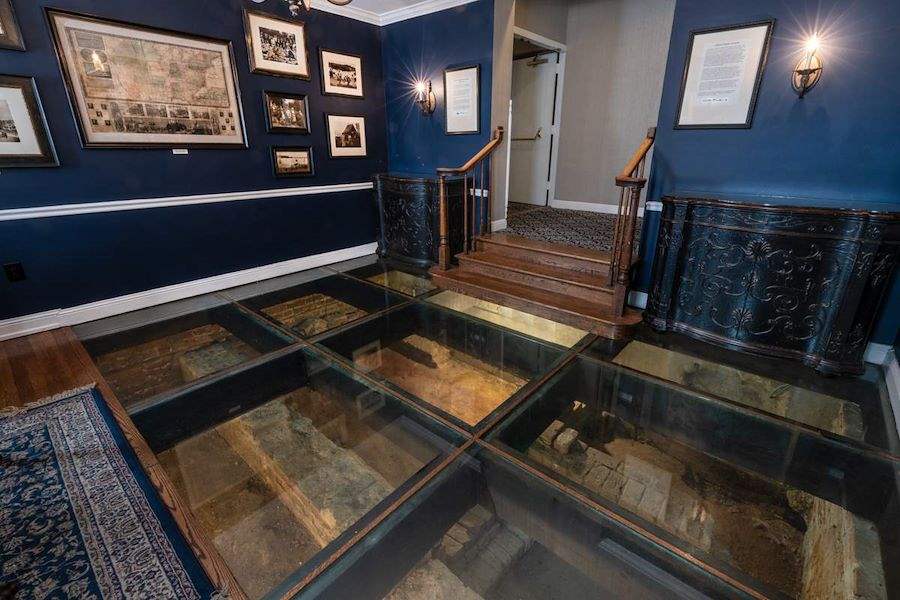Annapolis Historic Hotel
One of the most important events in our nation's history happened on Dec. 23, 1783 at the Maryland State House, steps away from the three properties of the Historic Inns of Annapolis. George Washington, Commander in Chief of the Continental Army, resigned his military commission giving the country "permission" to elect their first leader. Unlike past military heroes in Europe and elsewhere, Washington did not assume the role. Instead, he humbly gave a resignation speech which he hand-wrote (the original is on display in the State House) and quivered as he gave it. Those in attendance were recorded as being affected to tears. After 7 years of the Revolutionary War, who was going to lead the new nation?
For several decades from the late 1750's, Annapolis was in its Golden Age. Important dignitaries, such as Thomas Jefferson, Ben Franklin, Alexander Hamilton, Marquis de Lafayette, John & Samuel Adams, and George Washington stayed in Annapolis, one the nation's early capitals and the first peace time capital from Nov. 26, 1783 to Aug. 13, 1784. During these years, several of its glorious Georgian mansions were built and still exist as museums. The ratification of the Treaty of Paris in the old Senate Chamber on Jan. 14, 1784 marked the official end to the Revolutionary War and established the United States as a free and independent nation. Many statesmen and dignitaries stayed at what is now known as the Maryland Inn during these two momentous events.
Maryland Inn
Several conspicuous Annapolis families such as the Lloyd's, Chew's and Paca's owned the original three lots.
In the late 1700s, Annapolis served as the nation's first peacetime capital under George Washington. Throughout the 18th and 19th centuries, this has been the location of the legendary Maryland Inn, popular for lodging statesmen, governors and colonial and revolutionary war persona. Delegates of the 1783-1784 U.S. Congress stayed at the Maryland Inn when George Washington resigned as Commander in Chief of the Continental Army and ratified the Treaty of Paris.
This iconic hotel has been known by several names in the past 250 years - the Maryland Hotel, McCollough's Hotel, & Hotel St. George - and is the only eighteenth century Annapolis inn still in operation.
"Elegant brick house adjoining Church Circle, 100 feet front, three-stories high, 22 rooms, 20 fireplaces, 2 kitchens. Rooms mostly large and well finished, and is one of the first houses in the State for a house of entertainment, for which purpose it was originally intended." - Maryland Gazette 1782
Pictured: Photograph of the Maryland Inn by Henry Schaefer c. 1888-1890.
Governor Calvert House
The property was struck by lightning in 1752 & 1764; it was a mercantile firm in 1766; used as barracks for the State of Maryland in 1784; a printing office in 1843; and divided into apartments in the early 1900's. The University of Maryland and Historic Annapolis Foundation conducted archeological excavations from 1982-1884 uncovering thousands of artifacts. In 1985, Historic Inns of Annapolis completed the four-story addition.
A very special and unique feature of the house is the brick hypocaust, an ancient method for heating, in this case for Charles Calvert's orangery which was located in the southeast corner of the building. A portion of the sub floor exposing the hypocaust is now visible to our guests. It is believed to be the earliest surviving example.
The term orangery originated in Europe during the 16th and 17th centuries when citrus fruit was highly valued. The orangery was a showcase for the nobility. It could be a separate building, or a structure that was either part of or attached to a greenhouse in which citrus and other exotic fruits and flowers were kept.
Today, many state legislators still call this elegant hotel home each year when they convene at the Maryland State House just across the street.
Pictured: Photograph of Annapolis from the State House by Henry Schaefer c. 1888-1895. The Governor Calvert House is the bottom center building.
Robert Johnson House
The parcel was expanded to three lots and in 1902 converted from a family dwelling to a boarding house owned by Maud Marrow. Until the 1970's, it was known as the Maude Apartments. The Historic Inns of Annapolis purchased the adjoining buildings in 1983. Today this historic property is comprised of three houses, artfully restored and furnished with elegant 19th century antiques and décor.
Pictured: The Maryland State House, directly to the left is the Robert Johnson House.

